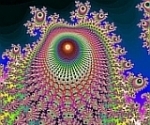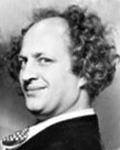JohnBFisher wrote:There was one mixed apnea. But the factor that seems to be the biggest issue is the central apneas (waking and sleeping). I asked my sleep specialist why an ASV unit instead of the S/T unit. He indicated he felt (based on testing and the constellation of symptoms) my problem was more a problem of dysregulation of my breathing and sleep than it was one of just the central apneas. I often experience shallower and shallower breathing until it leads to a full apnea. It is not just a sudden and full central apnea. So, he feared (and appears to have been correct) that the timed response of an S/T unit would only address one half of my problem. I needed both the servo ventilation as well as the timed response. Thus, an ASV unit was his primary choice after the BiPAP titration study clearly demonstrated problems with central apneas and sleep onset issues.-SWS wrote:... viewtopic.php?f=1&t=46945&p=427430&#p427430
And while John mentioned that his PSG team did not spot any CompSAS events during his sleep study, there seem to be some disease-unique pathogenic factors that still manage to bring John to some pathophysiological commonality with CompSAS/CSDB. ...
He also prescribed ropinirole (Requip) to tackle the Restless Legs Syndrome. Additionally, he prescribed Lunesta to help me adjust to use of the ASV unit. [ Ambien does nothing for me. Sonata wears off too quickly (within two hours). Lunesta lasts longer, but costs much more. ] Fortunately falling asleep with the ASV unit is less of a problem than either of us expected.
John,
It seems to me you have a good sleep doc who has done a pretty good job of looking into your patterns. When you describe that act of just breathing slower & slower & then slipping into central zone, resonates with my own experience. My wife's complaint was always that I slowed & stopped breathing & that kept her awake, not snoring/choking (except after a dinner party).
The interesting thing about the ASV machines is that they were initially designed to normalize cyclic patterns that can be observed by the SV algorithm within a 3 minute (or 4 depending on brand of ASV) window. Cheynes-Stokes Respiration typically cycles in an approx 2 min cyclic pattern & that is the dominant form of periodic breathing that the ASVs target. But, they do seem very capable of detecting the downward tracking slow breathing that we are talking about & boosting respiration & volume. The auto tracking of rate is one mechanism and the falling below target volume the other (av peak flow or target vol depending on brand).
Both the main FDA approved brands seem to do this very well. The Vpap Adapt SV may respond quicker than the Bipap AutoSV which probably gives it an edge for users with heart related respiration complications.
I know this issue of if the ASVs can effectively deal with non-cyclic downward trending respiration has been talked about before, but from using my 2 over the past 2 years I am very satisfied they deal with it well. The data off both brands seems to support this. It was this capacity of these machines that got me very excited about them when I first tried them. But interestingly, I have seen an analysts report that strongly implied that ASV was what some vendors saw as the future of cpap as it became more sophisticated & the prices came down. Again, I agree with SWS that ASVs aren't needed for everyone & cpap (with exhalation relief) is still the gold standard for simple OSA.
DSM













